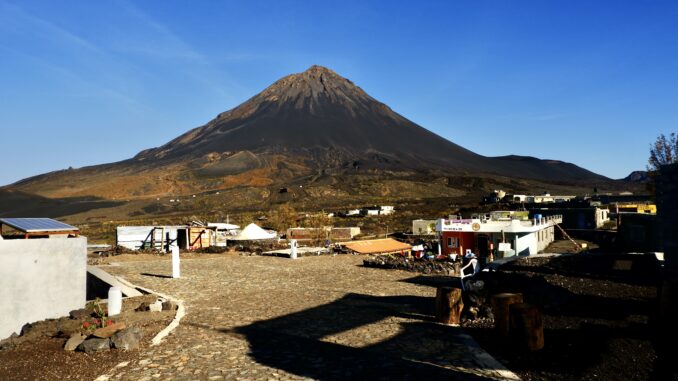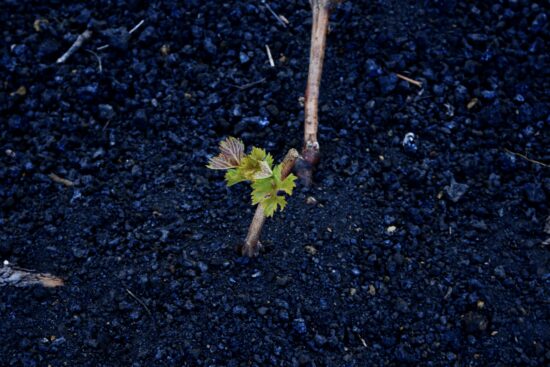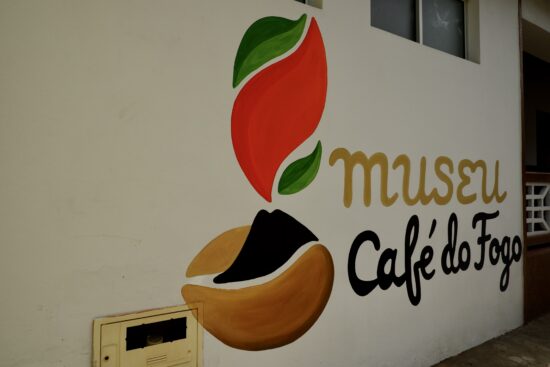
The island in Cape Verde has volcanic grounds that are perfect for wine and coffee production.
BY TANYA NANETTI
SPECIAL TO BARISTA MAGAZINE ONLINE
Photos courtesy of Tanya Nanetti
Ilha do Fogo is an island in the Cape Verde archipelago, about 350 miles off the coast of Senegal. Although it can be considered difficult to access, a trip to Fogo is certainly worth a try for the island’s unique features.
Fogo means “fire” in Portuguese, and the name explains it all. Its volcano Pico do Fogo’s last eruption was only six years ago in 2015, and it is surrounded by many other inactive volcanoes.
A group of settlers live in the small village of Chã das Caldeiras, a caldera amid the volcanoes. There’s no electricity and no running water here, and the small houses are built on old lava fields.
Lava Fields and Agricultural Production
Lava fields may not initially be considered the perfect place to grow something edible, but it’s actually quite the opposite. The rich volcanic soil that sits near the crater’s rim is perfect for growing produce, and grapes are one of the main crops here. That may sound surprising to wine lovers, considering Cabo Verde is much closer to the equator than any other wine region in the world, but since the caldera is more than 5,000 feet in elevation, this makes for an ideal growing environment.

The History of Wine in Fogo
In 1870, when French diplomat Comte de Montrond stopped in Fogo en route to Brazil, he brought the vines that actually started the production of wine in the caldera. Even now, more than 150 years later, the Chã-labeled wines are highly regarded. They are full-bodied and rich in color, thanks to its unique terroir. They are often compared to Sicilian wine grapes grown on the slopes of Mount Etna, an active volcano on the Italian island.
But wine is not the only thriving agricultural product of Fogo. In the outer caldera, lunar-shaped lava fields give way to more vegetation, where old coffee trees grow amongst papayas and bananas.
Coffee in Ilha do Fogo
It’s not completely clear how the coffee plant traveled to Fogo, but what’s certain is that it has been at least 300 years since the coffee has been there. Also, it probably started with a small arabica plant imported from somewhere in Africa by a Portuguese settler.
Nowadays, the coffee is still completely arabica, organic, and highly regarded by many. It grows north of the island between 3,000 and 5,000 feet on black basalt rocks known as lapilli, and is often planted using the same principles as vine growing. During nighttime, the moisture condenses onto the lapilli’s walls, and then slowly drips into the hole that houses the plant, thus providing nourishment.
The resulting coffee has a very sweet taste and a hint of acidity, with a full body and a silky aftertaste. The aroma generally ranges from chocolate to tropical fruits, red fruits, and lemon.
Finding the actual coffee farms is not so easy, especially without a guide or strong knowledge of the Portuguese language. But thanks to the manager of the tiny Museu Café do Fogo (Fogo Coffee Museum) in Mosteiros, we were able to access a small patch of land where some coffee trees grow alongside tropical fruits.

Where to Find Fogo Coffee
Compared to many coffee estates, the farms on Fogo initially look unorganized. However, coffee producers are organized into cooperatives that help facilitate the production and distribute the harvest. A local brand, Fogo Coffee Spirit Ltd, buys coffee from more than 100 producers, with the goal of creating sustainable agriculture on the island.
That said, in most cases the coffee is exported overseas to be roasted and sold mainly as specialty coffee, which is why it can be difficult to find the coffee directly on the island. Djarfogo in Sao Filipe is supposedly one of the local cafés to drink and buy roasted coffee from Ilha do Fogo.
Fogo is much more than simply coffee. It has a story behind it, a story made of lava flows and smiling faces, of complex roads and producers who challenge the elements. It is the story of the entire Cabo Verde archipelago, all inside a simple coffee bag.
ABOUT THE AUTHOR
Tanya Nanetti (she/her) is a specialty-coffee barista, a traveler, and a dreamer. When she’s not behind the coffee machine (or visiting some hidden corner of the world), she’s busy writing for Coffee Insurrection, a website about specialty coffee that she’s creating along with her boyfriend.

